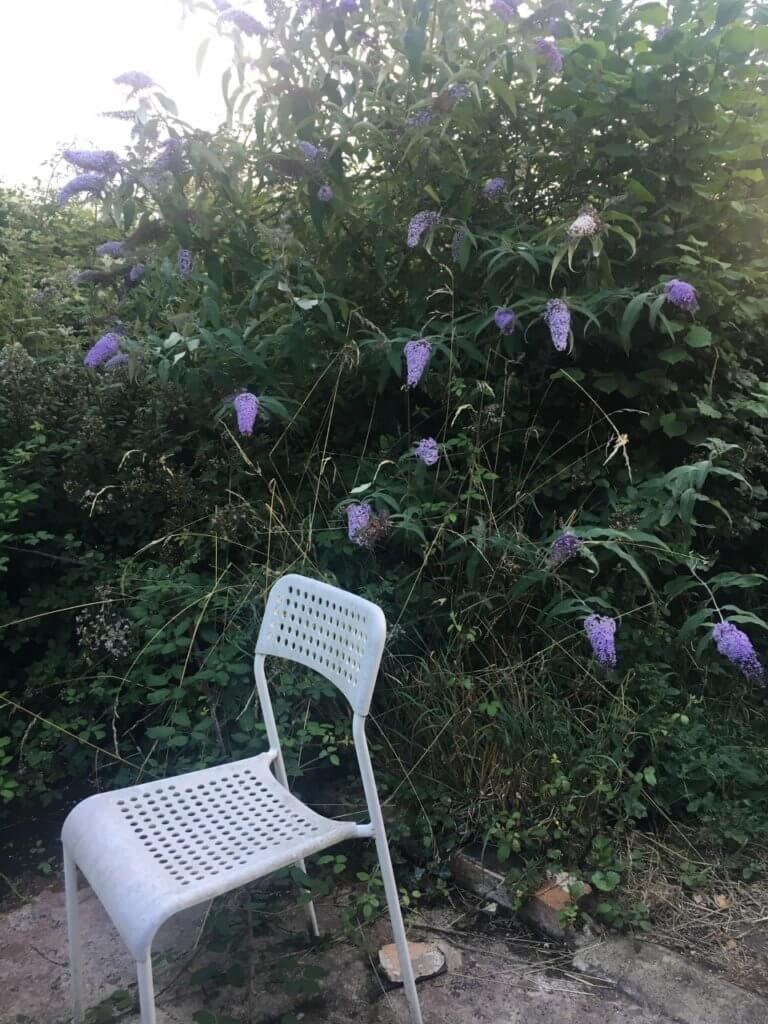
This year I am keeping a list of birds seen in or from my garden.
July was a month of warmth, heat and rain – like most months of the year really. Everything was growing like mad in the garden though. More a month for butterflies than birds with Meadow Browns, Gatekeepers and Ringlets joining the earlier species this month. On 31 July I recorded the garden’s first Painted Lady of the year, even though I have seen them all over the place for a couple of months outside of this little plot. The Painted Lady was on one of the two buddleia bushes – both of which are just coming into flower and promise to be butterfly-catchers throughout August.
As Roderick Leslie pointed out, I actually ended June on 40 bird species for the year having omitted Swift from the list, and July added three more species, none of which was a garden-lifer.
Those three new species were Kestrel, early in the month, a Raven flying over and calling (only the fourth record for the garden but increasingly seen locally) and a Hobby just squeezing in to July yesterday evening.
Here is the list, so far, for 2019;
- Robin
- House Sparrow
- Jackdaw
- Blackbird
- Woodpigeon
- Starling
- Black-headed Gull
- Great Tit
- Red Kite
- Carrion Crow
- Chaffinch
- Goldfinch
- Rook
- Collared Dove
- Dunnock
- Wren
- Long-tailed Tit
- Blue Tit
- Common Gull
- Redwing
- Fieldfare
- Reed Bunting
- Greenfinch
- Blackcap
- Song Thrush
- Herring Gull
- Lesser Black-backed Gull
- Buzzard
- Pied Wagtail
- Stock Dove
- Magpie
- Green Woodpecker
- Mallard
- Sparrowhawk
- Coal Tit
- Swallow
- Cormorant
- Yellowhammer
- Swift
- House Martin
- Kestrel
- Raven
- Hobby
The Fiedfares and Redwings of January feel a long way away.
Past Augusts have produced four species which would be new for this year: Goshawk, Peregrine, Sand Martin and Bullfinch. I think it is about time for an Osprey to fly over.
[registration_form]
Good to see red kite featuring in your list.
Today (August 1st) EXACTLY marks the thirtieth anniversary of these wonderful birds being reintroduced to England (in the Chilterns). South Buckinghamshire, large parts of Oxfordshire and large parts Berkshire are thick with kites now. The masters of the skies (when the swifts aren’t around!), west of London.
The Black Isle in Scotland came a few weeks later in 1989 and the midlands of England six years later (1995) I think… which may be the relatives of the birds you’re seeing now?
A remarkable success story and one that’s exactly thirty years old today.
Given the proximity of Stanwick lakes it seems surprising there are not a few more water birds amongst your fly-overs. No geese, no waders, no grey heron for example.